
Apple ‘Renews’ its environmental push
Apple is ramping up its environmental push, including the creation of a robot that disassembles your old iPhone for easier reuse.
Two years ago, the tech giant said it wanted to be 100 percent energy-renewable in its worldwide operations. Currently, 93 percent of its facilities run on renewable energy, said Lisa Jackson, Apple’s vice president of environment, policy and social initiatives. Jackson, who headed up the Environmental Protection Agency from 2009 to 2013, spoke Monday at the start of a product event at the company’s headquarters in Cupertino, California.
To get to this point, Jackson said the company built a 40-megawatt solar farm in China and built solar arrays in Singapore.
“Just like everything we do at Apple, when we think about the environment, we think about innovation,” Jackson said, ultimately plugging Apple Renew, a program where you can recycle devices for free in store or via the mail. “We want to change the world for the better. We think there’s no better challenge in the world than our changing climate.”
“We put an incredible amount of money into designing the best products in the world,” she added. We “put that same amount of energy into thinking about what to do when they can no longer be used.”
Jackson also introduced a robot named “Liam” who deconstructs old iPhones so parts can be repurposed. The company showed a short video of Liam taking apart an iPhone, from its display to the camera. The robot helps Apple separate silver, gold and platinum materials to either be recycled or discarded. Apple touts that Liam “can take apart 1.2 million iPhones a year.”
“There’s no other machine in the world that can do what Liam can do,” Jackson said. It “will help us make even bigger strides in the area of reuse and recycling.”
Read this entire article at cnet.
This was originally published on cnet written by Terry Colllins.

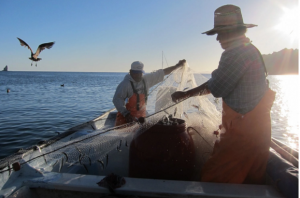 Establishing nature preserves and other types of protected areas is one of the most common conservation strategies — and its benefit to the environment is clear. What’s less obvious, though, is how these protected areas affect the human communities nearby.
Establishing nature preserves and other types of protected areas is one of the most common conservation strategies — and its benefit to the environment is clear. What’s less obvious, though, is how these protected areas affect the human communities nearby. Ruchit Garg, a Silicon Valley entrepreneur, says that he worries that something isn’t right with his Internet shopping habit. With each new delivery to his doorstep — sometimes several in a day — he faces the source of his guilt and frustration: another cardboard box. Ruchit Garg, a Silicon Valley entrepreneur, says that he worries that something isn’t right with his Internet shopping habit. With each new delivery to his doorstep — sometimes several in a day — he faces the source of his guilt and frustration: another cardboard box.
Ruchit Garg, a Silicon Valley entrepreneur, says that he worries that something isn’t right with his Internet shopping habit. With each new delivery to his doorstep — sometimes several in a day — he faces the source of his guilt and frustration: another cardboard box. Ruchit Garg, a Silicon Valley entrepreneur, says that he worries that something isn’t right with his Internet shopping habit. With each new delivery to his doorstep — sometimes several in a day — he faces the source of his guilt and frustration: another cardboard box.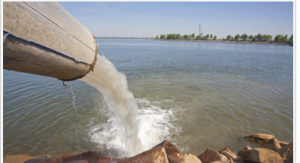 New York State residents have long enjoyed high quality, affordable potable water; the result of the State’s protected source waters and reservoirs, and robust testing and filtration programs. In fact, most New Yorkers have taken the quality of their potable water for granted. But in recent weeks two upstate New York towns – Hoosick Falls and Petersburg – have detected elevated levels of perfluorooctanoic acid (PFOA) in their drinking water supplies, leading state and federal authorities to warn residents against using tap water for human consumption.
New York State residents have long enjoyed high quality, affordable potable water; the result of the State’s protected source waters and reservoirs, and robust testing and filtration programs. In fact, most New Yorkers have taken the quality of their potable water for granted. But in recent weeks two upstate New York towns – Hoosick Falls and Petersburg – have detected elevated levels of perfluorooctanoic acid (PFOA) in their drinking water supplies, leading state and federal authorities to warn residents against using tap water for human consumption.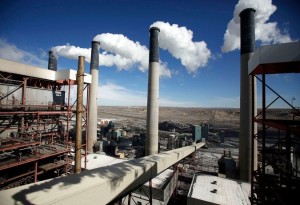 WASHINGTON — In a major setback for
WASHINGTON — In a major setback for 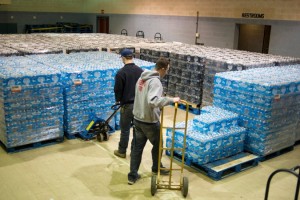 In
In 
 Yesterday evening, the Department of Health and Human Services designated Dr. Nicole Lurie, an agency assistant secretary, to lead the federal government’s response to the elevated lead levels allegedly found in the drinking water being provided by the City of Flint, Michigan, to its residents. This designation came on the heels of a meeting between Flint’s mayor and Valerie Jarrett in Washington, D.C. The federal government has elected to play a significant role in addressing this crisis, with President Obama signing an emergency declaration on Saturday which provided Flint with access to up to $5 million in federal funds. The crisis began in 2014 when Flint stopped getting water from Detroit and began obtaining its drinking water from the Flint River in an effort to lower costs.
Yesterday evening, the Department of Health and Human Services designated Dr. Nicole Lurie, an agency assistant secretary, to lead the federal government’s response to the elevated lead levels allegedly found in the drinking water being provided by the City of Flint, Michigan, to its residents. This designation came on the heels of a meeting between Flint’s mayor and Valerie Jarrett in Washington, D.C. The federal government has elected to play a significant role in addressing this crisis, with President Obama signing an emergency declaration on Saturday which provided Flint with access to up to $5 million in federal funds. The crisis began in 2014 when Flint stopped getting water from Detroit and began obtaining its drinking water from the Flint River in an effort to lower costs. Seriously, what did we do before Google? Not only do we have information on virtually everything under, on and above the sun, but we also now have data and trends.
Seriously, what did we do before Google? Not only do we have information on virtually everything under, on and above the sun, but we also now have data and trends.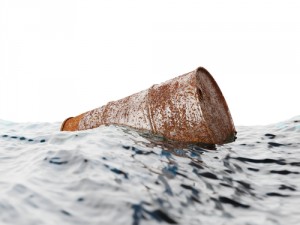 Just months before Rob Bilott made partner at Taft Stettinius & Hollister, he received a call on his direct line from a cattle farmer. The farmer, Wilbur Tennant of Parkersburg, W.Va., said that his cows were dying left and right. He believed that the DuPont chemical company, which until recently operated a site in Parkersburg that is more than 35 times the size of the Pentagon, was responsible. Tennant had tried to seek help locally, he said, but DuPont just about owned the entire town. He had been spurned not only by Parkersburg’s lawyers but also by its politicians, journalists, doctors and veterinarians. The farmer was angry and spoke in a heavy Appalachian accent. Bilott struggled to make sense of everything he was saying. He might have hung up had Tennant not blurted out the name of Bilott’s grandmother, Alma Holland White.
Just months before Rob Bilott made partner at Taft Stettinius & Hollister, he received a call on his direct line from a cattle farmer. The farmer, Wilbur Tennant of Parkersburg, W.Va., said that his cows were dying left and right. He believed that the DuPont chemical company, which until recently operated a site in Parkersburg that is more than 35 times the size of the Pentagon, was responsible. Tennant had tried to seek help locally, he said, but DuPont just about owned the entire town. He had been spurned not only by Parkersburg’s lawyers but also by its politicians, journalists, doctors and veterinarians. The farmer was angry and spoke in a heavy Appalachian accent. Bilott struggled to make sense of everything he was saying. He might have hung up had Tennant not blurted out the name of Bilott’s grandmother, Alma Holland White.
